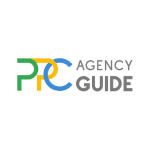
A good pay-per-click (PPC) agency can seriously turn up the volume on the number of leads you get, but if you’re trying to work more efficiently, improve return on ad spend (ROAS), and run an overall healthier and more profitable company, you need alignment. In this guide, we’ll walk you through how to align PPC with your sales team so your business grows stronger and scales faster.
Start with Shared Goals and Clear Definitions
If your marketing and sales teams are operating in silos, you’re leaving money on the table. The first step in aligning PPC with sales is to create a shared language and unified expectations. That begins with defining what a lead means, connecting PPC goals to your sales process, and agreeing on what success looks like.
Define What Qualifies as a Marketing vs. Sales Lead
The disconnect often starts here. Marketing considers anyone who fills out a form a “lead,” while sales may only see value in those who are ready to buy. That difference can lead to frustration on both sides and wasted ad spend. Create definitions that everyone signs off on, such as:
- Marketing Qualified Lead (MQL): Marketing qualified leads from PPC are prospects who have shown interest through an ad click, form submission, or content engagement, but still need nurturing before being handed off to sales.
- Sales Qualified Lead (SQL): Sales qualified leads from PPC are prospects who meet sales-readiness criteria, such as budget, authority, need, and timeline, and are ready for direct contact.
To make this work in practice, build these definitions directly into your customer relationship management (CRM) software or lead management system. For instance, use automation to move leads from MQL to SQL status once they hit agreed engagement or demographic thresholds.
Align PPC Campaign Goals with Sales Pipeline Stages
Your PPC campaigns should map directly to how people move through your sales funnel. A top-of-funnel campaign aimed at awareness will look very different from one targeting decision-stage buyers. Examples of alignment include:
- Top of Funnel: Run ads promoting educational content or webinars to attract potential leads.
- Middle of Funnel: Use retargeting ads that offer case studies or demos for those comparing options.
- Bottom of Funnel: Create high-intent campaigns focused on driving quote requests or consultations.
This structure allows both teams to see how ad spend connects to revenue opportunities. Moreover, businesses that align their marketing and sales data can achieve up to 36 percent higher customer retention and 38 percent higher sales win rates, Forbes reports.
Set Shared KPIs for Both Teams to Measure Success
The final piece is to agree on how success will be measured. If marketing celebrates impressions while sales focuses on closed deals, alignment will always be out of reach. Shared KPIs like the ones below bridge that gap.
- Lead Quality Score: Lead quality helps you evaluate how closely incoming leads match your ideal customer profile.
- Pipeline Contribution: By watching pipeline contribution, you can measure the value of opportunities generated from PPC leads.
- Conversion Rate from MQL to SQL: Track the transition to see how effectively marketing efforts are producing sales-ready prospects.
- Cost per Acquisition (CPA): With CPA, you can see the real financial efficiency of campaigns, beyond vanity metrics.
When both teams measure the same outcomes, it creates transparency and accountability. Over time, these shared KPIs help refine targeting, messaging, and spend allocation, thus ensuring your PPC strategy supports real revenue growth.
Improve Communication Between Sales and PPC Teams
Even with shared goals in place, alignment can fall apart without consistent communication. Sales and marketing teams often operate at different speeds. PPC campaigns move fast, while sales cycles can stretch weeks or months. That gap makes regular feedback essential to keeping your campaigns relevant and your ad spend efficient.

Set Regular Syncs to Review Lead Quality and Volume
Hold weekly or biweekly meetings with your PPC agency to prevent small issues from turning into expensive problems. These sessions should go beyond surface metrics and dig into what’s actually happening with leads once they reach sales. In each meeting, focus on:
- Lead Volume and Source: Cover how many leads came through PPC campaigns, and which channels or keywords performed best.
- Lead Quality Trends: Go over which campaigns are producing sales-ready prospects, and which are generating noise.
- Conversion Insights: Identify how quickly leads are moving through the funnel, and where they drop off.
By reviewing this together, marketing can see what’s working in the real world, and sales can share insights that help refine future campaigns.
Use CRM Feedback to Adjust Targeting and Messaging
Your CRM is a gold mine of insight. Every call, note, and deal status update tells a story about what’s resonating with prospects. When PPC teams access this data, they can:
- Refine Targeting: This allows them to adjust demographics, job titles, or industries based on which leads are converting.
- Improve Ad Copy: Knowing the language real customers use when they talk to your sales reps and mirroring it in ad copy can improve your results.
- Optimize Landing Pages: Your data can show which pain points and benefits consistently close deals, so your PPC team can fold them into landing pages to increase leads.
For example, if your CRM data shows that leads mentioning “cash flow issues” convert at higher rates, your PPC team can test ad headlines or landing pages built around that phrase. This creates a more personalized buyer experience and ultimately a shorter sales cycle.
Create a Feedback Loop from Sales to Marketing
Sometimes teams treat the handoff of leads as transactional: “I’ve done my part, now you take over.” It needs to be managed more like a two-way conversation rather than a hand-off. Sales shouldn’t just receive leads. They should continuously inform marketing about what’s happening with them. A healthy feedback loop might include:
- Post-Lead Review: Sales reports on which leads were high-quality and why.
- Campaign Insights: Marketing shares which ads and keywords drove those leads.
- Collaborative Adjustments: Both teams agree on changes to targeting, messaging, or offers.
Automating part of this process helps, too. Tools like HubSpot or Salesforce can trigger feedback forms or shared dashboards whenever a deal is marked as won or lost. That data closes the loop and gives PPC teams near real-time visibility into what’s paying off.
Integrate Tools for Visibility Across Teams
As we touched on earlier, alignment starts with shared goals and strong communication. But to make that alignment sustainable, you need systems that support it. Technology bridges the gap between marketing and sales, helping both teams see the same data, track the same leads, and measure the same outcomes.
Connect Ad Platforms with Your CRM System
If your PPC data lives in one platform and your sales data in another, your team can’t leverage data that’s already available. Integrating your ad platforms, such as Google Ads or Meta, with your CRM provides end-to-end visibility. This allows you to:
- Track the Full Buyer Journey: You can see how someone moves from ad click to closed deal without manual reporting.
- Identify Which Campaigns Drive Revenue: Move beyond surface-level metrics like impressions or clicks to understand which keywords or audiences generate customers.
- Eliminate Duplicate or Stale Leads: Sync systems to ensure new leads aren’t lost, and existing contacts aren’t retargeted unnecessarily.
For example, when a CRM like HubSpot or Salesforce is connected directly to Google Ads, your PPC team can automatically exclude customers who have already converted, which reduces wasted spend while refining audience quality.
Use Lead Scoring and Attribution Data to Qualify PPC Leads
Earlier, we discussed the importance of defining what qualifies as a marketing versus sales lead. Lead scoring takes that one step further by assigning value to behaviors and demographics.
- Attribution Data: You can use attribution data to uncover which touchpoints influence conversion. Knowing whether a lead came from a first-click on an educational ad or a final-click on a quote ad helps you allocate spend more effectively.
- Lead Scoring: With lead scoring, you qualify interest by assigning points for actions like form fills, downloads, or site visits. This helps sales prioritize high-intent leads while marketing refines nurturing campaigns for those who need more time.
High-performing sales teams are 2.8 times more likely to use data-driven predictive insights, such as lead scoring, to guide their strategy, according to Salesforce. This approach ensures both teams are acting on quality, which drives more value than quantity alone.
Give Sales Teams Access to PPC Performance Dashboards
Sales doesn’t need to see every metric, but they do need visibility into what’s driving their pipeline. Providing access to simplified PPC dashboards via tools like Google’s Looker Studio or HubSpot Reports keeps everyone aligned. These dashboards should highlight:
- Active Campaigns and Key Offers: Ensure sales understands what messages prospects have seen.
- Lead Volume by Source: Help sales forecast workload and performance expectations.
- Conversion and CPA Trends: Uncover which campaigns are producing qualified leads most efficiently.
When sales teams know which campaigns are active, they can tailor their outreach to match the messaging prospects have already interacted with. That continuity between ad copy and sales conversation builds trust and improves close rates.
Optimize Lead Handoff Processes
As mentioned earlier, strong alignment depends on shared goals, communication, and visibility. The next step is ensuring that leads move smoothly from PPC to sales without losing momentum. A poorly managed handoff can undo all the progress made upstream, as delays, missed follow-ups, or mismatched expectations can quickly cool down even the warmest prospects.
Set Clear Expectations for Lead Follow-Up Timelines
Speed is everything. Companies responding to leads within one hour are seven times more likely to qualify that lead than those who wait longer, Harvard Business Review (HBR) reports. Yet, in many businesses, leads generated from PPC ads sit untouched for hours or even days.
To prevent this, establish concrete rules that define how fast sales should respond to each type of lead.
- High-Intent Leads: Prospects requesting quotes or demos should receive outreach within minutes.
- Moderate-Intent Leads: Those downloading resources or filling out general forms should be contacted within twenty-four hours.
- Low-Intent Leads: Leads from broader awareness campaigns can be nurtured with automated follow-up sequences.
Agreeing on these timelines ensures no one assumes the other team “has it covered.” Everyone knows what’s expected and when.
Automate Lead Assignments Based on Intent and Source
Manual lead routing is slow and error-prone. Automation eliminates those bottlenecks and ensures that every lead is sent to the right person at the right time. Automation can handle:
- Lead Distribution: Consider assigning leads to specific reps based on geography, industry, or company size.
- Intent-Based Routing: Send hot leads directly to sales while nurturing lower-intent contacts through marketing workflows.
- Instant Notifications: Alert sales reps the moment a qualified lead enters the pipeline.
For example, if a prospect completes a “Request a Quote” form through a PPC ad, automation can immediately assign that lead to a rep, send a notification, and start a personalized email sequence, all within seconds.
Ensure Contact Forms and Landing Pages Align with Sales Workflows
Your forms and landing pages are the first stop in your sales process, so they must capture information your sales team actually needs. Too often, PPC forms collect marketing-friendly details like job titles or industries, but skip the qualifying data that helps sales tailor their outreach. To tighten this connection:
- Match Form Fields to Sales Needs: Include questions about timeline, budget, or service interest if they’re essential for qualifying, but be mindful of keeping forms brief to keep completion rates high.
- Integrate with CRM Systems: Automatically sync submissions to avoid data entry delays or errors.
- Design with Conversion and Function in Mind: Forms should load quickly, be mobile-friendly, and match the tone of the conversation your sales team will continue.
If your sales team uses pipeline stages such as “Qualified,” “Proposal Sent,” or “Negotiation,” make sure your forms collect enough context for sales to immediately place the lead in the right stage.
Review Performance Together and Iterate
Alignment is an ongoing process. Once your systems and handoffs are in place, the real growth comes from reviewing results together and making continuous improvements. Regular collaboration keeps both teams focused on what drives revenue.
Track Conversion Rates Beyond the Initial Click
PPC data often stops at the point of conversion, be it a form fill, download, or call. But that’s only the beginning of the buyer journey. To truly understand campaign effectiveness, you need to follow the lead through the sales pipeline. That means tracking:
- MQL-to-SQL Conversion Rate: Know how many marketing-qualified leads progress to sales-qualified leads.
- SQL-to-Customer Conversion Rate: Track how many of those SQLs turn into paying clients.
- Time to Close: Monitor how long it takes leads from specific campaigns to become customers.
By extending measurement beyond the click, you uncover which keywords, audiences, and offers actually produce customers, and they’re not always the ones that produce the most inquiries.
Involve Sales in Campaign Reviews and Strategy Sessions
Your sales team is on the front line, hearing real objections and motivations from prospects every day. Including them in campaign reviews brings that insight directly into your strategy. During joint reviews, discuss:
- Lead Quality Feedback: Review what kinds of prospects are converting and which ones fall short.
- Offer Relevance: Go over the promotions or messages in ads to align with real buyer needs.
- Competitive Shifts: Cover any talking points or objections that sales is hearing that marketing can address in ad copy.
When sales participates in campaign analysis, it closes the loop between strategy and execution. Marketing sees what’s actually happening in the field, and sales feels invested in improving campaign outcomes.
Refine Offers and Messaging Based on Closed-Won Insights
One of the most overlooked data sources is the “closed-won” record, which shows the deals that actually made it across the finish line. Those leads hold the blueprint for what works. Use those insights to refine future campaigns:
- Winning Offers: Identify which discounts, content pieces, or calls to action most often lead to closed deals.
- Resonant Messaging: Borrow phrases from customer conversations or proposals that sealed the deal.
- Targeting Adjustments: Look for patterns in industry, company size, or geography among your best clients.
For instance, if a healthcare provider is running PPC ads and analysis shows that prospective patients responding to “same-day appointment” messaging close faster than other groups, it signals a need to expand that segment and tailor more campaigns around that benefit.

Work with an Agency That Supports PPC and Sales Alignment
When your PPC strategy and sales process work in harmony, every click moves you closer to revenue. The right agency delivers traffic and helps your team convert it. PPC Agency Guide connects you with experts who understand how to unite marketing performance with sales success. Find your agency match.
FAQs on How to Align PPC with Your Sales Team
What does effective lead handoff from marketing to sales look like?
A strong handoff happens when leads are delivered quickly, with complete information, and meet agreed qualification standards. Automation tools help route leads instantly based on intent and source, while clear follow-up timelines ensure no opportunity goes cold. Every step should connect seamlessly to your CRM for full visibility.
What’s the best PPC strategy for B2B sales?
The most effective B2B PPC strategies align campaigns with the buyer journey. Use educational ads at the awareness stage, retargeting strategies for consideration, and solution-focused offers for decision-makers. Layering in CRM data, account-based targeting, and consistent messaging between marketing and sales drives higher-quality leads and shorter sales cycles.
Do I need to hire someone to handle sales and marketing coordination?
It depends on your team’s size and structure. Smaller businesses often manage alignment through regular meetings, shared tools, and strong PPC agency collaboration, while larger organizations benefit from a dedicated revenue operations or marketing operations role. The key is ensuring someone owns the process and maintains accountability between teams.
How can I address PPC lead quality issues?
To address PPC lead quality, start by reviewing your lead definitions and comparing marketing metrics to sales outcomes. If leads aren’t converting, adjust your targeting, ad copy, or landing pages using CRM insights. Implement lead scoring to prioritize higher-intent prospects and refine campaigns based on which sources consistently produce closed deals.
How do I use CRM feedback for PPC?
Your CRM tracks how leads progress after clicking an ad. Use that data to identify which campaigns drive revenue, not just form fills. Analyze notes and deal outcomes to adjust targeting, messaging, and offers. Over time, this feedback loop ensures your PPC efforts attract more qualified, conversion-ready leads.


















